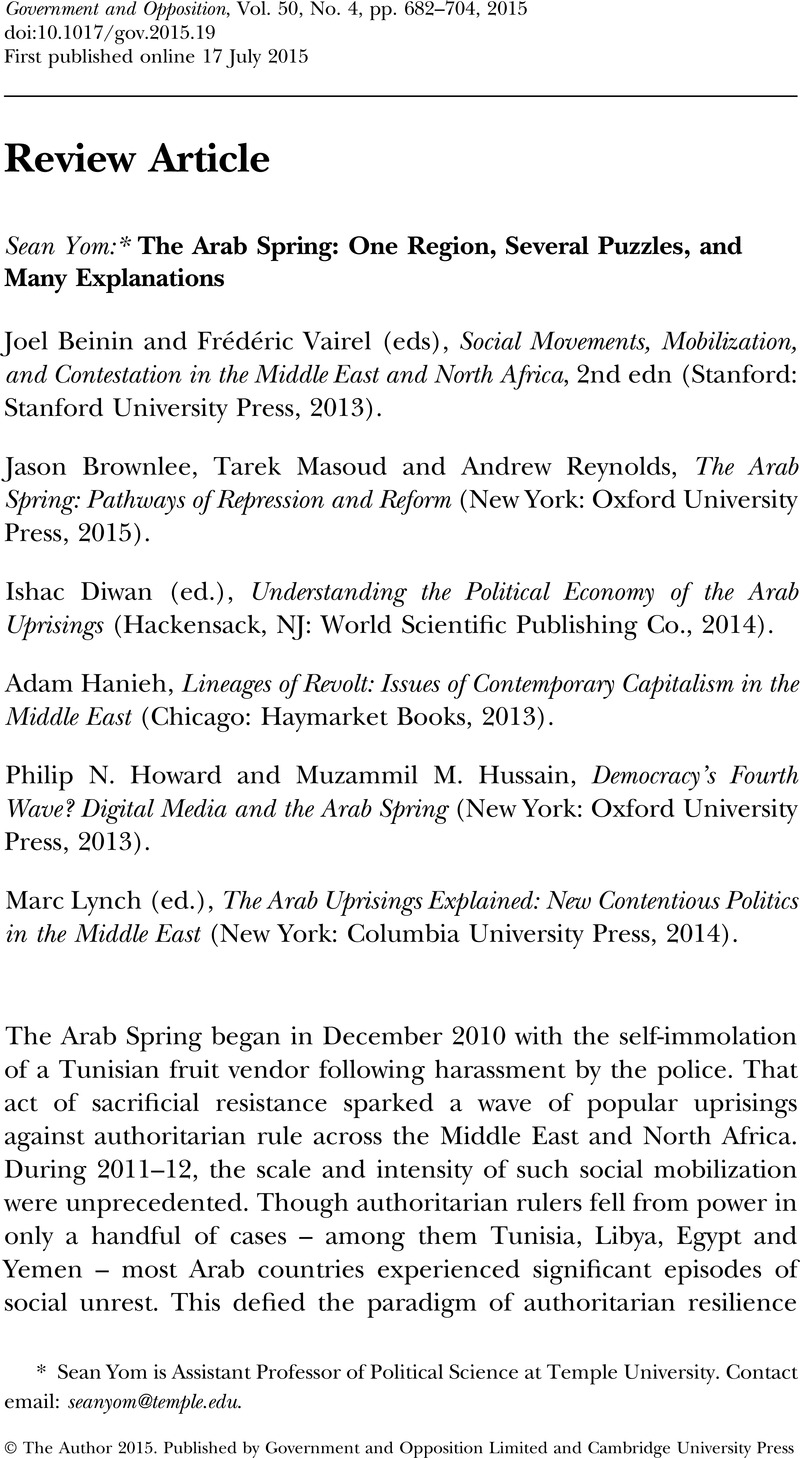Crossref Citations
This article has been cited by the following publications. This list is generated based on data provided by Crossref.
Josua, Maria
2016.
If You Can't Include Them, Exclude Them: Countering the Arab Uprisings in Algeria and Jordan.
SSRN Electronic Journal,
Tansel, Cemal Burak
2018.
Turkey’s Relations with the Middle East.
p.
65.
Lacouture, Matthew T.
2018.
The arab world upended.
The Journal of North African Studies,
Vol. 23,
Issue. 3,
p.
537.
Josua, Maria
and
Edel, Mirjam
2021.
The Arab uprisings and the return of repression.
Mediterranean Politics,
Vol. 26,
Issue. 5,
p.
586.
Lynch, Marc
2021.
Taking stock of MENA political science after the uprisings.
Mediterranean Politics,
Vol. 26,
Issue. 5,
p.
682.
Alaoui, Hicham
2022.
Pacted Democracy in the Middle East.
p.
55.
Odiegwu, Chinwendu Laurentia
and
Zeb-Obipi,, Isaac
2023.
Effect of International Seaborne Trade on Productivity of Ports in Nigeria.
SSRN Electronic Journal,
Toska, Silvana
2024.
Revolutionary Emotions.



